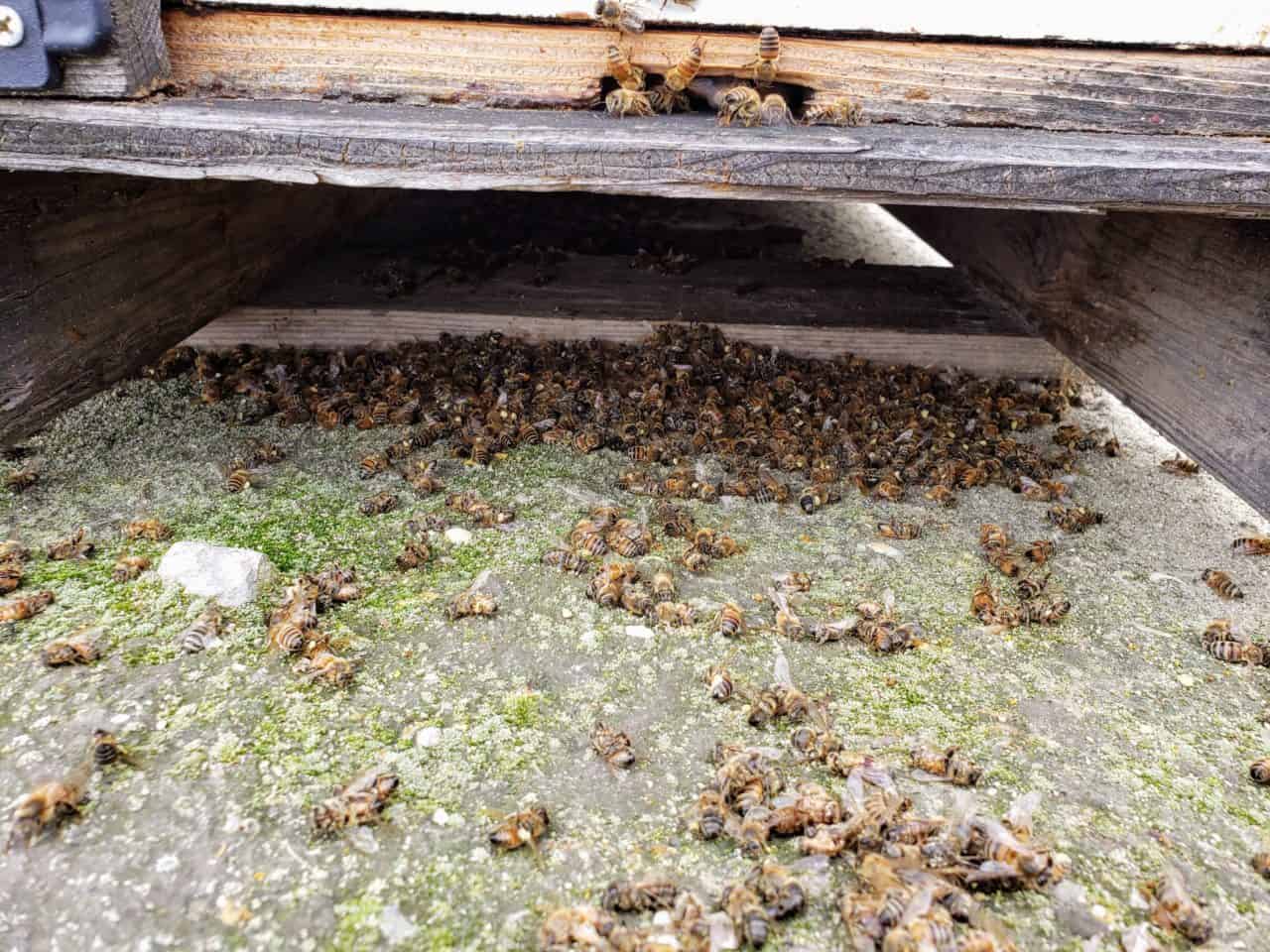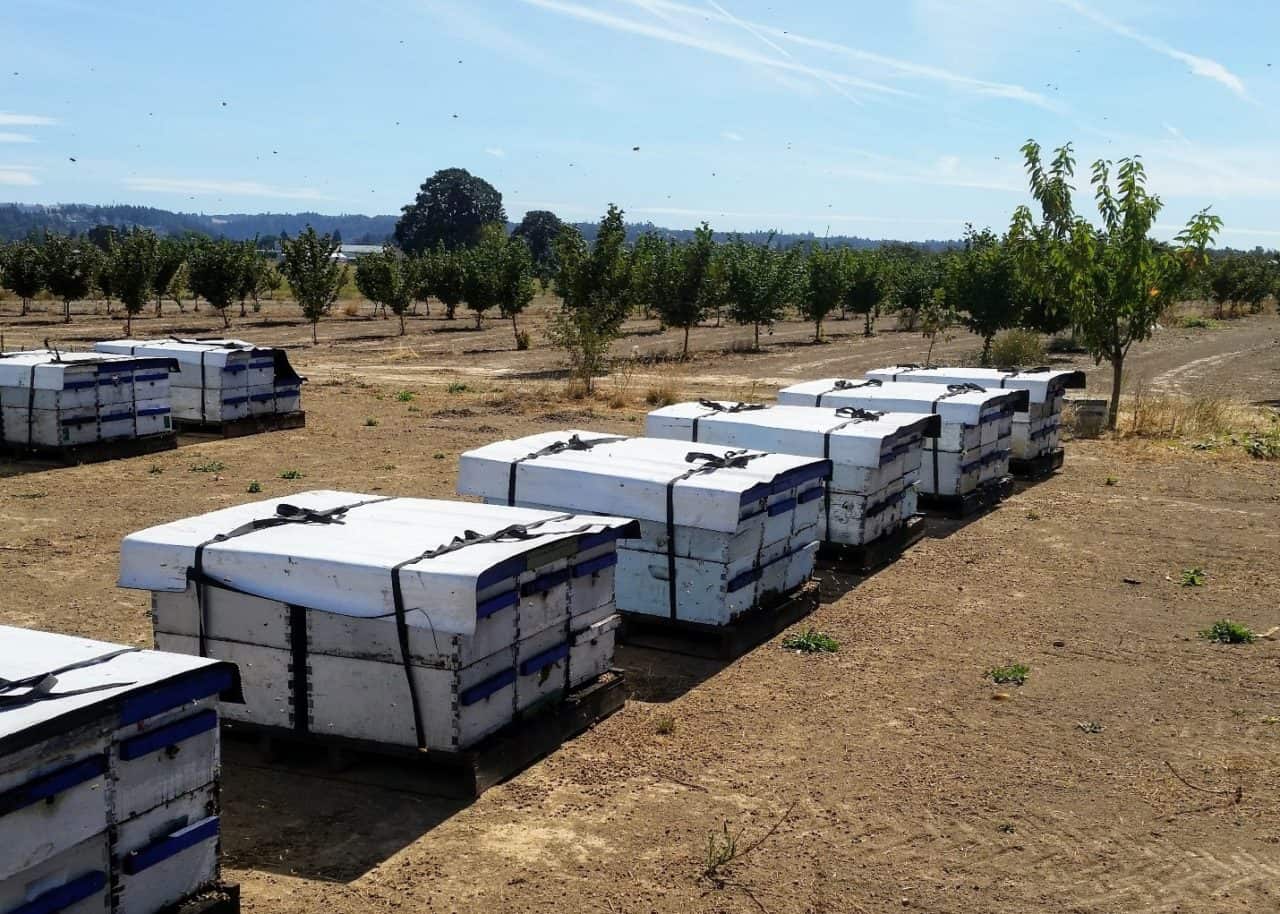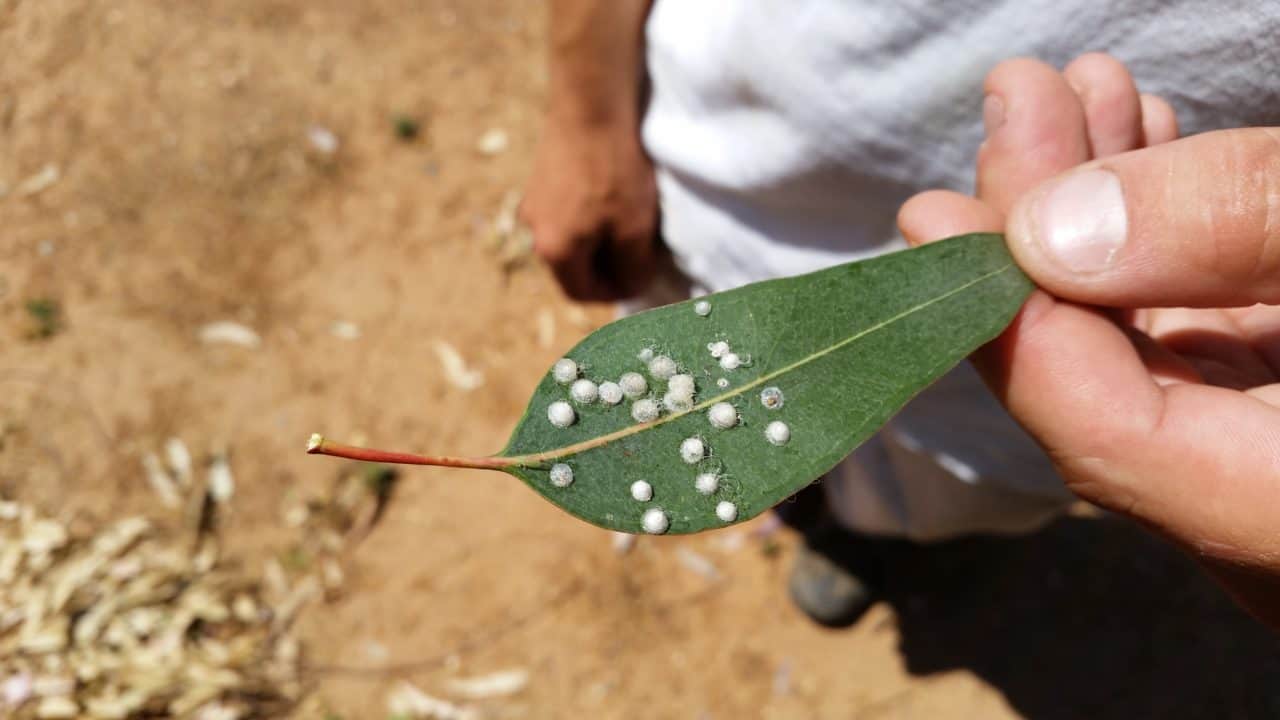Every January and February, commercial beekeepers from every corner of the country send their bees to the California Central Valley to participate in the largest pollination event in the world – the California almond bloom. We (BIP’s tech team field specialists) follow these beekeepers from our respective regions to California to assess colonies and collect samples in the almond orchards. Having all of us in the field at one time, looking at bees from every corner of the country, gives us the opportunity to assess the pulse of the industry. We are also able to observe firsthand the conditions on the ground during the almond…
Author: Ben Sallmann
“Peace of Mind” Sampling
by Ben Sallmann, BIP Honey Bee Health Field Specialist, Northwest US At the end of the day, beekeepers want to know that their bees are healthy, well-fed, and prepared for the next season. Fall is a critical time for beekeepers because the condition of the bees now will determine the winter survival rate and the number of colonies available for almond pollination early next year. The photo above was taken at daybreak on the plateaus of western Idaho, where the bees worked the canola fields earlier in the summer. These bees have been left with good winter stores and sampling showed low varroa mite counts.…
Observations of Forager Deaths in Almonds this past February
This February while traveling around the almond orchards in central California, I observed many instances of dead pollen foragers at the entrances of colonies. In addition, many beekeepers reported being approached by their growers, who were concerned by the number of dead bees they were seeing along with the lack of flight activity in the orchards. Because of past issues with bees getting sprayed, some beekeepers suspected pesticide poisoning. However, after observing a number of these cases first hand, I concluded that most of the time environmental conditions were the main factor causing bee death. In many cases, I noticed that North-facing colonies on each…
Three Advantages of Rain Covers
Having worked on both the Northern California Tech Transfer Team and Pacific Norwest Team has given me a unique opportunity to compare and contrast management styles across regions. One thing that I immediately noticed when I first came to the Oregon team was the use of rain covers or shelters over the fall and winter months, especially in the wet Willamette Valley. It should come as no surprise that rain covers are not used extensively in California, considering in recent years the winter rainfall has been insignificant, except in 2017 (and 2019 so far!). However many Oregon beekeepers have come to the conclusion that rain…
BIP Mobile Bee Diagnostic Lab
Our Bee Informed work trucks serve as virtual mobile bee labs, and are stocked with everything we need to take a variety of samples. On this particular day, the Pacific Northwest Tech Transfer Team was preparing to take virus samples in addition to the standard varroa/Nosema testing, as part of a longitudinal USDA study on bee viruses. Each individual bee will be tested (rather than the typical composite sample) to determine the type, variation and scope of viruses present. Numbered tags are stapled on each colony so they can be found again and longitudinally monitored over many months. The cardboard box contains a cooler full…
Bee Understanding
Earlier this year I had the opportunity to take part in the filming of a documentary by the Bee Understanding Project and it turned out to be a very fun and informative experience! The point of the film was to show the relationship between the almond and beekeeping industries through a job swap, where each participant, almond grower and beekeepers, could better see the other’s perspective. Unlike many other recent honey bee documentaries, this film does not portray commercial beekeepers or almond growers as the bad guys, but rather is fair in describing the challenges each of them faces as our agricultural systems become more…
Pros and Cons of Feeding Dry Pollen Sub
Most beekeepers have come to realize that due to lack of natural forage in our urban and agricultural landscapes, feeding pollen substitute has become necessary to keep bees healthy in most parts of the country. Last summer was an especially challenging season in the West due to extremely hot and dry conditions. Despite a wet spring in California and Oregon last year, the spigot was shut off abruptly early in the summer and what little forage was available quickly shriveled. Beekeepers who had not been providing supplemental feed saw their colonies dwindle as the summer went on. Although it’s still early, this year is looking…
Himalayan Blackberry: Beauty or Beast?
As a new member of the Pacific Northwest Tech Team, I have been fascinated by the wide variety of cultivated, native, and invasive bee-friendly plants in the region. Coming from the arid Sacramanto Valley of Northern California, the lush greenery and cool mountains have been a welcome change as well. One thing I have been amazed by is the quantity of Himalayan blackberry. I thought the central valley had a lot, but in the Pacific Northwest it seems to invade every patch of available ground. This blackberry species is a ubiquitous sight along roadsides, waterways, and disturbed ecosystems such as recently logged forests and…
Alders Valued as Early NorCal Pollen Source
As January comes to a close and much of the country is still buried in snow, signs of spring are beginning to show here in Northern California. After receiving above-average rainfall this winter, the land feels as if it's ready to burst with life after years of severe drought. Farmers and beekeepers already have high expectations for the year as reservoirs fill and the land soaks up rainfall. Forage for bees in most of California has been been very scarce in recent years and beekeepers have relied on near year-round protein feeding. This is especially crucial in preparation for taking the bees into the almond…
Honeydew: A Mixed Blessing
When Americans think of honey, most of us assume it comes from floral sources—basically bees collect flower nectar, add enzymes, and evaporate moisture to produce the finished product. However, I was recently talking to a friend who grew up near the Black Forest in Germany, and he told me as a child that his mother would give him “forest honey,” which was thicker had a much richer taste than anything he had seen in American supermarkets. Also known as honeydew honey, the source is not floral but actually from the waste products (which you can check over here) of a number of sap-sucking insects including…





